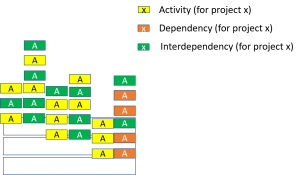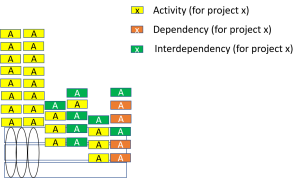This is the second blog post in this series. But, the market’s need for speed increased, and this is how it will look to work fully in parallel.

This is very different from waterfall way of working with its gates that need to be passed to get more money to be able to handover and execute next phase. Now the project/program itself need to figure out and plan the interdependencies so all teams can start at the same time. There is no waiting for a specification to be 100% ready and released from another team, rather tell what is needed in the first revision, so your own team can continue. You need to be very proactive in order to get this working smoothly and know not only what you want yourself, rather also know not only what the other teams can deliver and when they can deliver. Broad competence is key here, and will be fully elaborated on in the coming blog posts about the organisation’s oil, “to solve”, giving an organisation both resource and flow efficiency.
With fully parallel we are still in the ordered domains in the Cynefin™ framework, which means that if we have a problem we cannot solve ourselves, we know that we have an expert that can help us out.
Always in the ordered domains, we need to have control of the critical line with its activities, since if they are delayed, the whole deliverable will be delayed.
But in the Complex domain it is different, and it will look like this.

Here we do not have all knowledge to solve our task. We do not even know how we can solve it, or even if it exists a solution at all to our task. We need to iterate and gain new knowledge from every iteration in order to know next step.
Important to understand is that we may need to keep track of interdependencies and may need to do iterations at any level of the company. It can be a single team or a team of teams or higher, or in the portfolio.
Also, with uncertainty it is possible to put that part on the critical line, but due to the uncertainty it is very risky, so the critical line is more suitable for activities in the ordered domains.
In the next blog post it is time for a wrap-up and to state our new principles, visualise them and negate them to fit the purpose of the Prefilled Problem Picture Analysis Map.
C u soon.

